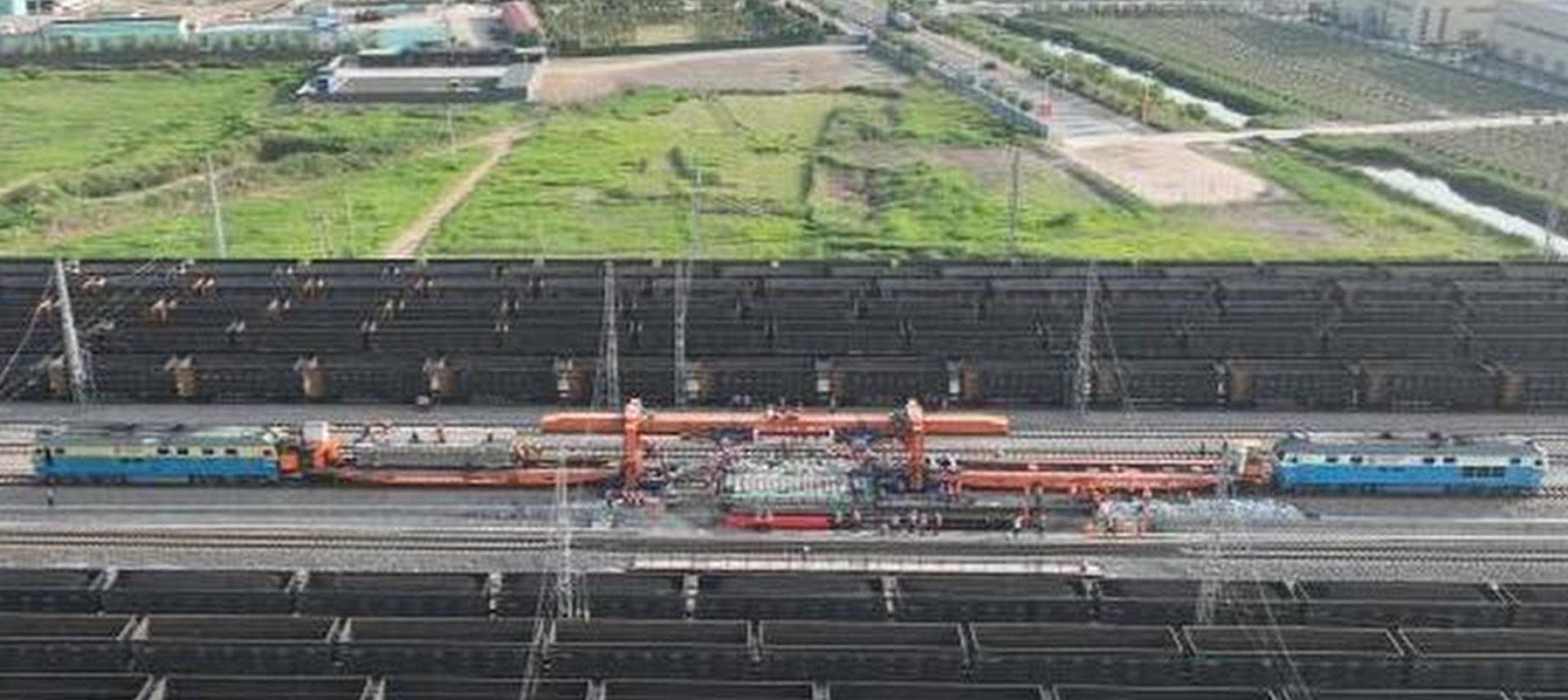Nan Yang
SENIOR MEMBER

- Joined
- May 1, 2010
- Messages
- 5,252
- Reaction score
- 1
- Country
- Location
‘World record’: China replaces section of train bridge in  four hours
four hours  using smart maintenance machine, says railway firm
using smart maintenance machine, says railway firm
- Taihang machine used to replace worn-out bridge section on the Shuohuang railway line in Hebei province without interrupting railway service: CRCC
- It is three times as fast as existing methods, allowing bridge replacement work to be done during a ‘window period’ when the railway is not in use, says company

Stephen Chen in Beijing
Published: 6:00am, 22 Jun, 2023

Some rail engineers say the Taihang smart machine showcases China’s commitment to innovation and technological leadership in the rail industry. Photo: Weibo
Chinese engineers say they have set a new world record by replacing a section of railway bridge in just four hours, without interrupting the normal service of the railway.

The feat of unprecedented efficiency was accomplished on Tuesday using a smart machine that enabled major maintenance to be done quickly and safely, they added.
The Taihang machine, the world’s first railway bridge replacement machine, was used to replace a worn-out bridge section on the Shuohuang railway line in Hebei province, China Railway Construction Corporation (CRCC) said on its WeChat social media account.
The line is one of the busiest transport routes in China, connecting the western coal-producing region of Shaanxi province to the major coal export port of Huanghua in Hebei province.
The 500km (310-mile) line has carried more than 4.4 billion tonnes of coal – around half the annual global coal output – in two decades of operations.
The machine, named after the Taihang Mountains that separate northern and central China, is a foldable machine that can be transported by rail and “transformed” on site.
It is equipped with advanced technology and equipment such as precise positioning and adjustment mechanisms enabling it to handle different bridge replacement tasks, including in complex terrain and on high piers.
Previously the quickest such bridge replacement took 12 hours, according to the firm, which said “there is nothing like this in the world”.

The speed the work can be allowing the bridge replacement work to be completed during a “window period” when the railway is not in use, avoiding interruption to normal service and impact on train services, according to the company.
According to the CRCC, the process begins by preparing the new bridge section with ballast and rail tracks at a nearby station area. The new section is loaded on to the Taihang machine which then transports the new bridge section to the section that needs replacing.
There, the Taihang machine is transformed to prepare for the replacement process which involves lifting the existing bridge section, loading it on to a vehicle and installing the new bridge section in its place.
The machine ensures precise positioning and adjustment of the new bridge section to ensure proper alignment and stability.
After the new bridge section is installed, the machine quickly restores the railway line to operational status by compacting the track bed using large hammers.

The Taihang machine developed in China was used to replace a section of railway bridge without interrupting normal service of the railway. Photo: Weibo
The old bridge section is then transported from the site by the Taihang machine, completing the replacement process.
The successful completion of the bridge replacement work using the Taihang machine represents a significant technological advancement in railway infrastructure maintenance.
Some rail engineers say it showcases
Wu Jingpeng, a senior engineer in charge of the bridge replacement project at the China Railway Fifth Survey and Design Institute Group, said current railway bridge replacement methods used around the world were limited to specific situations, including platform lateral movement and gantry crane replacement.
Platform lateral movement involves moving the entire platform or structure of the bridge horizontally to replace it with a new one. This method typically requires temporarily closing the railway line and diverting train traffic to an alternative route during the replacement process.
Gantry crane replacement involves using a large crane to lift and remove the existing bridge structure and replacing it with a new one. This method also requires the temporary closure of the railway line.
“Existing replacement technologies all require long periods of line interruption and track changes during construction, which affects railway traffic organisation and operational safety and cannot meet the requirements of bridge replacement tasks in special situations such as high piers, complex terrain, [a] lack of construction platforms or work sites,” said Wu.
China’s existing railway lines have been in operation for many years, with some dating back over a century.
Many have surpassed their lifespan of 50 years, and more than 40 per cent of railway bridges have been in use for more than three decades, according to the company.
China has developed enough extensive high-speed rail networks to circle the Earth. But to maintain the efficiency and safety of high-speed trains, it is crucial to promptly maintain and repair them to minimise disruption and ensure smooth operations.


